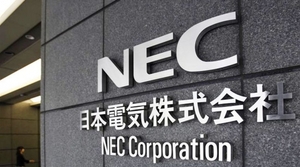NEC Corporation – Story of a Japanese IT and Electronics Company Previously Known as Nippon Electric Limited.
Established in 1899, NEC Corporation has come a long way in the industrial venture and witnessed different phases of it. When the company was established by Kunihiko Iwadare and Takeshiro Maeda, it was named Nippon Electric Limited Partnership. The company rebranded itself as NEC Corporation in 1983. It is based in Minato, Tokyo, Japan, and operates on a global basis with more than 100,000 employees. The main products of the company are telecommunications equipment, supercomputers, software, electronics, servers, etc. In 2017, the company was featured on the Fortune 500 list.
About NEC Corporation
When the company was established, it mainly focused on the manufacturing and sales of telephones and switches. But, in order to survive, evolution is of utmost importance. Hence today, NEC corporation is not only thriving in the electronics industry but also known for offering cloud computing and IoT platforms. The company was the biggest PC vendor in Japan in the 1980s and also became the fourth largest PC manufacturer in the world. In the 21st century, NEC Corporation has spun off its semiconductor division to Renesas Electronics and Elpida Memory. Last year, when the US banned Huawei’s 5G equipment in the country, NEC geared up to fill that void in both the US and UK.

Establishment of Nippon Electric Limited
Kunihiko Iwadare and Takeshiro Maeda bought facilities from Miyoshi Electrical Manufacturing Company which helped them establish Nippon Electric. Western Electric, an American manufacturing company, and Nippon formed a joint-stock company in July 1899 which became Nippon Electric Company (NEC). This marked the first-ever joint venture of Japan with a foreign company. Initially, the company started out with the production and sales of telephones and switches and opened a plant at Mita Shikokumachi in 1901. The telephone subscribers started increasing in Japan in the early 1900s which increased the market potential for NEC. With the implementation of the telegraph treaty between Japan and China, NEC entered the Chinese market in 1908 followed by entering the Korean market as well.
Turmoils in the 20th Century
As the market started expanding for NEC, four of its factories were destroyed during the great Kanto earthquake of 1923. But, NEC got back on its feet very quickly and started the radio communications business in 1924. Western Electric was the prime supplier of broadcasting equipment for NEC. The company also established a radio research unit and by 1934 supplied China’s Xinjing station with a 100kW radio broadcasting system. NEC provided the Japanese Ministry of Communications with A-type switching systems and non-loaded line carrier equipment before World War II.
World War II marks the darkest days in history not only for NEC but for entire Japan. The company suffered heavy losses and some of its plants were completely damaged due to bomb attacks and foreign relations were also disrupted. By the end of 1944, the production of NEC reduced drastically. When the situation started getting back to normalcy, NEC re-opened the major plants in 1946. The company started investing significantly in R&D and won the Deming Prize for its excellent quality control. In 1954, computer research and development began in NEC and it designed Japan’s first crossbar switching system. NEC eventually expanded its market to North American and European territories as well.
Present Day NEC Corporation
The 21st century for NEC began with a joint venture with Samsung for manufacturing OLED displays. NEC also collaborated with the UK government and provided projectors for school students. In 2002, the electronics division of NEC became a separate entity rebranded as NEC Laboratories America Inc. NEC built the Earth Simulator which was the fastest supercomputer in the entire world for two years (2002-2004). Participating in the automobile industry marked a joint venture with Nissan in 2007 for producing lithium-ion batteries for electric cars. In 2012, a huge economic crisis struck NEC and it was forced to cut 10,000 jobs. Currently, the principal subsidiaries of NEC Corporation are NEC Corporation of America, Netcracker Technology, NEC Europe, KMD, Avaloq, and NEC Display Solutions (majority stake sold to Sharp Corporation).
Takashi Niino – CEO of NEC Corporation
Takashi Niino is the current CEO of NEC Corporation. He joined the company in 1977 and became the CEO and President in 2016. In this time spent in NEC, he was offered several roles like executive general manager and executive vice president. He completed his education at Kyoto University.

Annasha Dey is an NIT student, who apart from studying engineering is also a content writer. She has a great interest in photography, writing, reading novels, and travelling as well. She is a foodie who loves socializing and hanging out with her friends. She is also a trained Kathak dancer and a big fashion enthusiast. Dey also loves watching TV series, which includes F.R.I.E.N.D.S. and Big Bang Theory. To be a better writer she prefers to read more